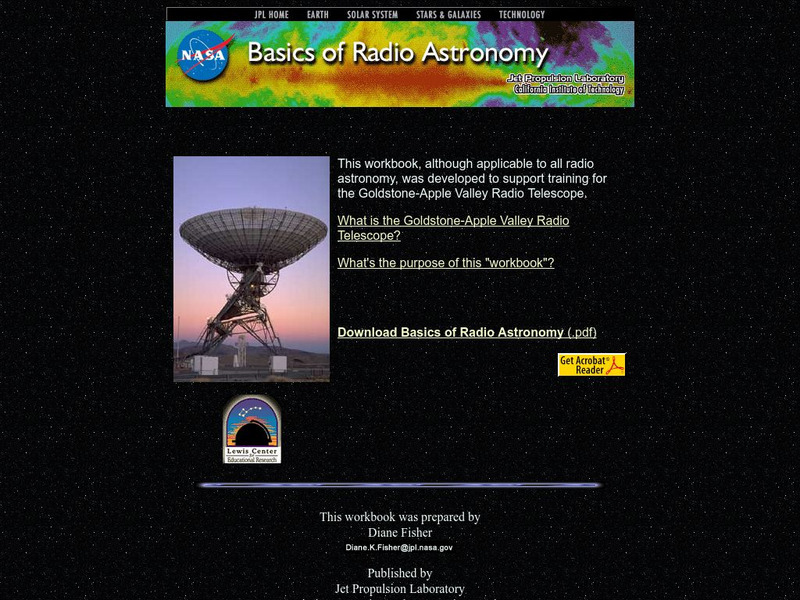Other
What Is Radio Astronomy?: Radio Astronomy at Vla and Vlba
Describes two radio telescopes run by the National Radio Astronomy Observatory (NRAO). The first telescope is called the Very Large Array (VLA) and the second is called the Very Long Baseline Array (VLBA). Both use radio interferometry....
Texas Education Agency
Texas Gateway: What Are Telescopes Used For?
Scientists use telescopes to study the various components of the universe. How do telescopes work? Learn here about the electromagnetic spectrum and the various types of telescopes.
Harvard University
Harvard Smithsonian Center for Astrophysics: 1.2 Meter Millimeter Wave Telescope
Describes the collection of 1.2m millimeter wavelength radio telescopes that are operated by the Millimeter Wavelength Group at Harvard Smithsonian. It details some history of radio astronomy and of the telescope itself, gives great...
Other
Radio Sky Publishing: Site for Amateur Radio Astronomy
Site describes multiple resources for the beginner amateur radio astronomer. Great general information for beginners on basic radio physics and on the fundamentals of radio telescopes. Nice set of links to other useful sites.
NASA
Nasa: Basics of Radio Astronomy
Site developed by NASA to support training at the Goldstone-Apple Valley Radio Telescope. A manual in PDF format that covers everything from the basics of electromagnetic spectrum through radio sources through mapping the sky in the...
Other
Nrao: What Is Radio Astronomy?
This page contains an introduction to Radio Astronomy written by the National Radio Astronomy Observatory (NRAO). It contains some basic theory as well as frequently asked questions and teacher resources.
CK-12 Foundation
Ck 12: Earth Science: Telescopes Study Guide
[Free Registration/Login may be required to access all resource tools.] This study guide summarizes key points about electromagnetic radiation and the different types of telescopes that rely on various forms of it. Includes a few...
PBS
Pbs Teachers: Scientific American: Science in Paradise: Big Dish
Investigate the science of radio astronomy, and create a model of a curved reflecting dish that will work like the Arecibo detector to detect electromagnetic waves. Explore risk using a risk space grid.








